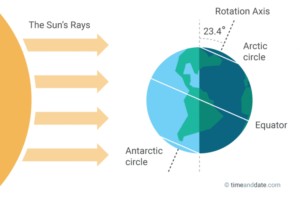
WINTER SOLSTICE 2018
On Friday, December 21, 2018, at 2:23 pm PST 22:23 UTC, the sun will reach its southernmost point before starting back on its northward trek toward Spring. That’s for all of us in the northern hemisphere. You can calculate your own time accordingly. It has more to do with the tilt of the earth on its axis and its elliptical orbit, and we will leave that to the astronomers. I am just one of those who watches the sun regularly rise and set, notice where it is on the horizon, and give thanks. For our friends south of the equator it’s the opposite and it’s Summertime.

The winter solstice really only lasts a moment in time, and some of the other terms for the day on which this occurs, are “midwinter”, “the longest night” or “the shortest day”. It really is not the shortest day or longest night. It just refers to the amount of light within a 24-hour period. And, it should not be confused with “the first day of winter” especially here in northern California where we have had lots of snow at the higher elevations in the Sierras since Thanksgiving.
The anticipated arrival of the Light, whether Winter Solstice, Christmas, Hanukkah, Kwanzaa, Las Posadas or Diwali, these are holidays, holy days. Holy means simply, “set apart.” Here’s this season once again to help us celebrate, to find ways to spread tidings of comfort and joy. For many it’s about the Spirit of giving and gratitude; for others, a quiet time to reflect on the year past and the one ahead; for some it’s about Peace on Earth. For our families, from the time we were children and now watching our children and theirs, it is Christmas. And “Yes, Virginia, there is a Santa Claus. He exists as certainly as love and generosity and devotion exist, and you know that they abound and give to your life its highest beauty and joy.” (https://www.nysun.com/editorials/yes-virginia/68502/)
What winter solstice signals for me is the return of the light as now the days start getting longer or rather there is a bit more daylight each day, just as it has been decreasing slowly each day since last summer’s solstice. This celebration of light is recognized and honored by many religious groups. From the Roman Saturnalia to the Indian Pancha Ganapati to Hanukkah and Christmas, to the Persian Yalda and the birth of Mithra, and the recent creation of Kwanzaa in 1966, all kinds of cultures have found ways to pay special attention to our source of life and follow the sun.
You may well celebrate this season with your family and friends, give gifts and light candles or fires; you might take a walk in the woods or ski down a mountain or through a forest; you might read or pray or sing; many of us will eat and drink around a community table. Whatever you do, take some time to do something special that is worth remembering. Stop whatever you’re doing for just a moment in time, for that is what solstice is, a moment in time. Mark it in your journal or on your calendar with your own special thought and experience and share it with your family and friends. At least, be open to receive the blessings and gifts of the season and celebrate joyfully and gratefully.

Comments (2)
The movement of the Sun and the Moon has influenced us humans (and all life, for that matter), for eons… for me, the Solstice is a time to pause, reflect upon, prepare for, and celebrate the coming transition…
Amen, my brother and friend, Amen and Amen!